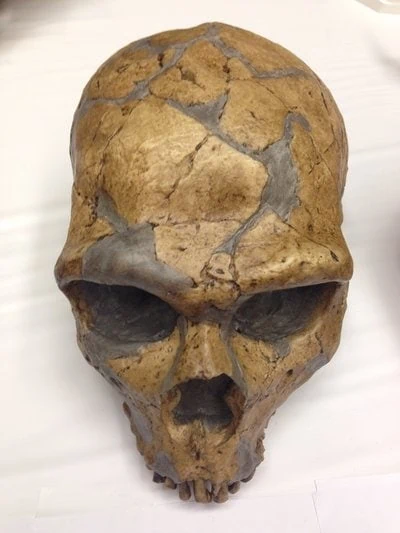
Many scientists look at Neanderthal bones and see a key link
in the evolution of humans from chimpanzees.
Lucinda Hill sees possible evidence of biological
engineering gone wrong.
Hill, an ER physician and biologist at Southern Adventist
University, said one of the bigger riddles for Bible-believing scientists is
the discovery of Neanderthals and other hominids, or so-called apemen, whose
skeletons show a combination of ape and human characteristics.
“I personally don’t know how you explain the presence of
chimpanzee-like characteristics in the Neanderthal,” she said at a 10-day
International Conference on the Bible and Science in St. George, Utah.

“Could it be genetic engineering or hybridization?” she
said. “And could it be that some of the other things that we see in the fossil
record were also caused by genetic engineering or hybridization?”
Hill raised the questions as she and other Adventist scientists
urged an audience of several hundred church educators to look at scientific
evidence through new eyes in order to better understand how it reflects
Biblical creation rather than millions of years of evolution.
Hill, showing a long row of skulls used by scientists to illustrate
the evolutionary progression from chimpanzee to human, said all skeletons
between the chimpanzee at the beginning of the row to the Neanderthal near the
end show a combination of human and ape characteristics.
Focusing on the Neanderthal, which looks more human than the
others but still has ape characteristics, she said her research discounted the
possibility that those ape characteristics were caused by disease. She also expressed
doubt that the Neanderthal was an extinct creature made by God.
But the Neanderthal was significantly more intelligent than
the ape, she said.
“We have evidence that the Neanderthal had some knowledge of
the afterlife,” Hill said. “They had rituals with which they buried their dead.
That certainly seems to be a higher level of functioning than the chimpanzees
or gorillas.”
She said Adventist Church co-founder Ellen G. White might
have an answer to the puzzle. She read from White’s book Spiritual Gifts Vol. 3: “But if there was one sin above another
which called for the destruction of the race by the flood, it was the base
crime of amalgamation of man and beast which defaced the image of God, and caused
confusion everywhere. God purposed to destroy by a flood that powerful,
long-lived race that had corrupted their ways before him.”
“Amalgamation,” Hill explained, is a 19th-century
word that is consistent with the modern understanding of crossbreeding or
hybridization.
“Many people have argued back and forth about what she
means,” Hill said of White’s comments. “But I would you like to consider what
she said here.”

Scientists widely believe that Neanderthals lived in caves
in southern Europe and went extinct about 24,000 years ago, possibly because of
abrupt climate changes that left them without food. While little is known about
Neanderthals as living creatures, scientists have collected a lot of
information about their lives by evacuating Gibraltar caves.
The first Neanderthal skull was found relatively recently,
only in 1848, and it was dug up in a quarry being excavated to construct a
fortress on the Rock of Gibraltar.
White’s words in the 1864 predated the discovery of most of
the fossil apemen but provide a possible explanation for data that is often
interpreted as a contradiction to the Bible.
Hill said this might be a providential affirmation of the
Biblical account of the creation of man in the image of God.
“Could it be that this was a gift to the church?” she said.
She added that her theories, developed
with her husband, retired paleontologist Lee Spencer, were just that and
did not reflect the official church position.
The notion that Neanderthals might represent biological
engineering stirred the interest of audience members, and questions about apemen
dominated a Q&A session of conference speakers late Thursday afternoon.
One audience member questioned how apemen could be linked to
White’s writings because scientists have not found any human remains that predate
the flood. The panel of speakers noted that many fossils were of animals that lived
before the flood, and Hill said White also wrote that amalgamation occurred
after the flood.
But the panel was stumped by a question on whether Jesus had
also died for the Neanderthals described by Hill.
“That is a really good question, isn’t it?” Hill said.
She stressed, though, that the bigger issue is to study
scientific evidence through new eyes and to remember that many theories rely on
faith — regardless of whether a scientist supports the Biblical account of a
literal six-day creation week several thousand years ago or the popular
understanding that life evolved over millions of years.
“Faith is required no matter your worldview or your
interpretation of different types of data,” she said.
“The question that each one of us needs to ask is: ‘In what
do we put our faith?” she said. “Do we put our faith in the unchanging word of
God and in this beautiful story of the creation account? Or do we accept a
different interpretation?”
Teachers Urged to Think Outside Evolutionary Box